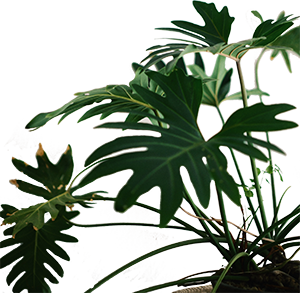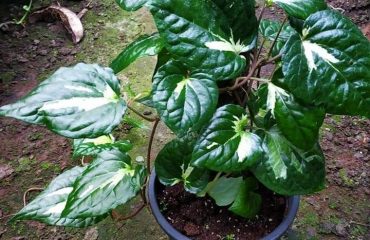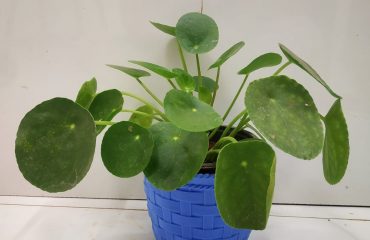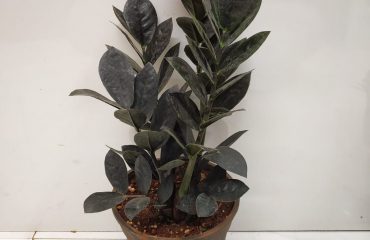Most Popular Houseplants In India
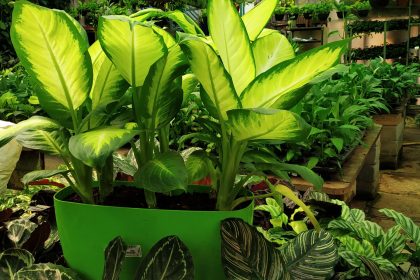
Create your own indoor jungle and discover your wid with our trendy indoor plants
Indoor plants are phenomenal;
not only do they bring a sense of cheer, colour and life to any indoor space, they do so almost effortlessly,
whilst they continually grow, change and transform your indoor spaces into happier and healthier places…
Below we dish the dirt on our pick of the Some Trendiest Indoor Plants this season, how to best care for them, and within which spaces they should be placed for maximum beauty and benefit!
1) Ferns
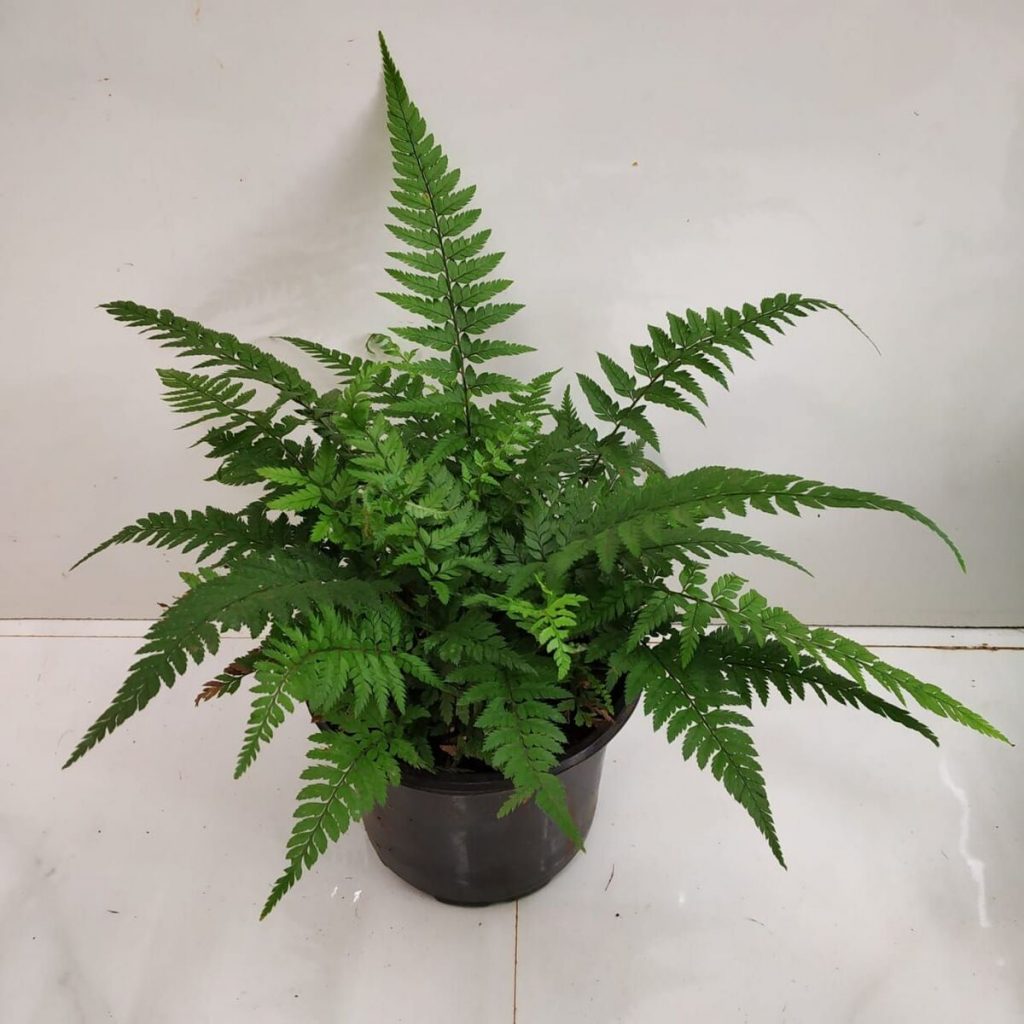
Tracheophyta, commonly known as Ferns, are a family of plants with many species. Varieties we all know and love include Adiantum Raddianum, or the Maidenhair Fern, Microlepia Strigosa, the Lace Fern, Phlebodium Aureum, or Blue Star Fern, Protasparagus Plumosus, or Asparagus Fern, and the hardier Rumohra adiantiformus, also known as the Leather Leaf Fern. The Nephrolepis exaltata or Boston Fern is another firm favourite. And the Staghorn Fern is an especially interesting and beautiful tropical variety.
Watering:
Ferns appreciate frequent watering with the aim to keep soil moist, not waterlogged or soggy.
Light and Positioning:
Ferns need bright indirect light. Position near a sunny window for optimal light absorption. Ferns will endure cooler temperatures but generally like warmer rooms, given their tropical geographical roots. They are considered a great bathroom plant – read more about that |HERE| and generally do well in hanging baskets because of their natural bushy and droopy form.
2) Pothos

The Epipremnum Aureum commonly called Pothos, is also known as Devils Ivy or Money Plant. It’s trailing habit and variety of colours, together with it’s ease of maintenance makes it a firm favourite amongst plant newbies and gurus alike. It’s yellow, green and variegated varieties are beautiful in any space.
It is easily confused with (and very similar to) the Philodendron, and barring some minor differences, they are extremely similar. Philodendron however have waxy, fuller leaves, waxy, fuller stems, and less flexibility in their stems as a result.
Watering:
If you are one to neglect watering; Pothos is your plant! They like their soil to become slightly drier between waterings.
Light:
Did you know: Loss of variegation is a result of too little light. If leaves become too pale, this indicates too much light. Pothos will endure low light conditions but bright indirect light is best.
Positioning:
Place Pothos on shelves and other elevated places to take advantage of the beautiful trailing leaves. Beautiful in bedrooms, atop floating shelves, library shelves, shelves in studies and cascading down cabinets or fridges in the kitchen. It also enjoys humidity and will adore living in your bathroom- read more about your Living Bathroom |HERE|
3) Chinese Evergreen
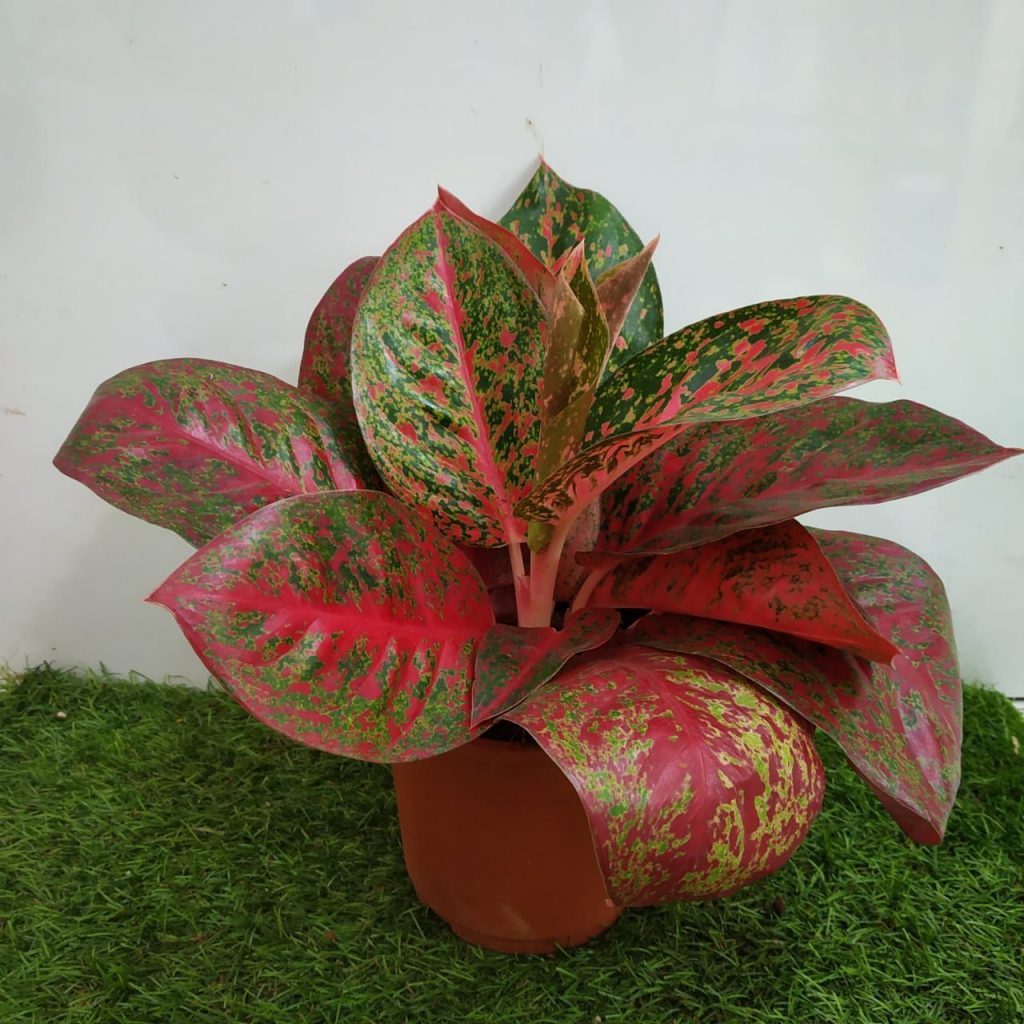
Part of the Arum family; Aglaonema, commonly know as the Chinese Evergreen, is a range of plants that has variegated leaves, usually veined with lighter green and yellows. The remarkable thing about this plant is its ability to absorb benzine, formaldehyde and carbon monoxide from the air – one of the many benefits of indoor plants. It is also a great plant for beginners because of its ease of care.
Watering:
Watering every second week in winter and once a week in summer is ideal for this plant. It likes the soil to be moist and not too wet. Fertilise with a water-soluble fertiliser once a year as the plant starts to age – our Plant Doctor department has what you need, ask our inside information for assistance.
Light and positioning:
Low light is very well tolerated. Darker rooms which don’t get much sunlight really are perfect for Aglaonema – bedrooms, darker studies, offices and TV rooms or even lounges with no direct sunlight are perfect spots for this indoor plant.
4) Dracaenae; a Family of Plants

Draceana Marginata or Madagascar Dragon tree has thin upright leaves with pink edging on a green centre. Marginata Bi-colour has similar colouring with a tinge of yellow in the leaves. Draceana Reflexa or Song of India comes in bright yellow and green, or bottle green varieties, and it’s leaves are softer and more broad. Draceana Massangeana or Cornplant is a broad leafed variety with green foliage. The options of these gorgeous form creating Draceana are endless.
Housed in the Asparagacae family, Draceana are closely related to the Agave family, which explains their similarity in leaf appearance and growth pattern. Their beautiful bright leaves and variety of colourings makes this tree-forming house plant a unique delight to any house plant owner.
Watering:
Dracaenae like to dry out a tad; water when the soil is dry to the touch. At this point the soil needs to be thoroughly watered until it can be seen from the drainage holes. In strong light, watering will need to be more frequent. In lower light, water less often.
Light and positioning:
Direct sun will scorch their leaves, filtered or indirect light is best. Due to its tall tree-like growth the Draceana can be placed in large pots on the floor as statement plants. They work well in bedrooms and offices and are known for their toxin removing properties.
5) Peace Lily
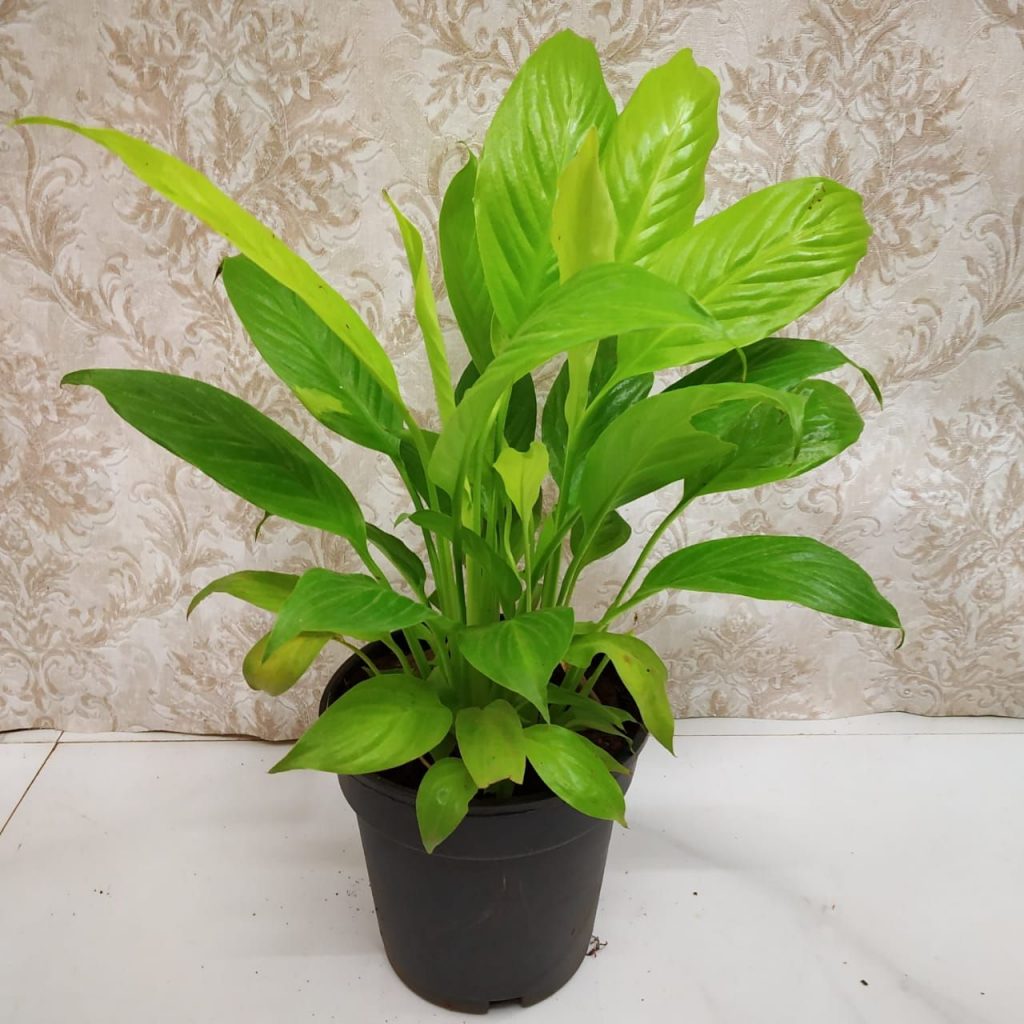
The Spathiphyllum, cmmonly known as Spath or peace lily can grow to great sizes with very little effort. Their creamy-white flowers appear in spring and sporadically throughout the year, given enough light. It should be noted that this plant contains calcium oxalate and is toxic to pets, so it should be kept out of reach of the masters of the house!
Watering:
If a Spathiphyllum is in too small a pot it will wilt. Potting in a large pot will enable more water to be retained, and it can be watered once a week. Brown leaves is indicative of too dry a soil, although Peace Lilies can go happily with barely moist soil, and will not tolerate too wet a soil at all.
Light:
Intense afternoon light should be avoided. Indirect filtered light is best for these plants. Too much fertiliser will cause green flowers, whilst not enough fertiliser will see a flowerless plant; so fertilise with a plant food once a month.
Positioning:
With the ability to increase room humidity by 5%, these plants not only remove toxins from the air but are an excellent natural humidifier in any bedroom. What a beneficial and useful plant!
6) String of Pearls

The family Asteraceae houses this creeping, perennial succulent; Senecio Rowleyanus commonly referred to as String of Pearls. The beautiful pea-like beads are in fact leaves, growing along a necklace of vining stem. This plant comes in variegated and green varieties, and can be propagated simply by laying sections of the vine on top of soil. Other varieties include String of Bananas and String of Beans – similar plants with uniquely shaped leaves and dangly trailing habits.
Watering:
Water as little as once a month in winter, and as often as once a week in hot summers. It can dry out a little in between waterings and continue to cope happily. Conversely, it will not tolerate wet soggy feet so don’t over water.
Light:
Senecio, String of Pearls, generally need a medium to strong indirect light to continue to grow optimally.
Positioning:
It can be toxic to pets so try to keep it out of their way. Elevate this graceful beauty atop shelves and other raised spaces to capitalise on its generous trailing stems. Perfect for hanging baskets, atop cabinets or cascading down shelves.
7) Fiddle Leaf Fig
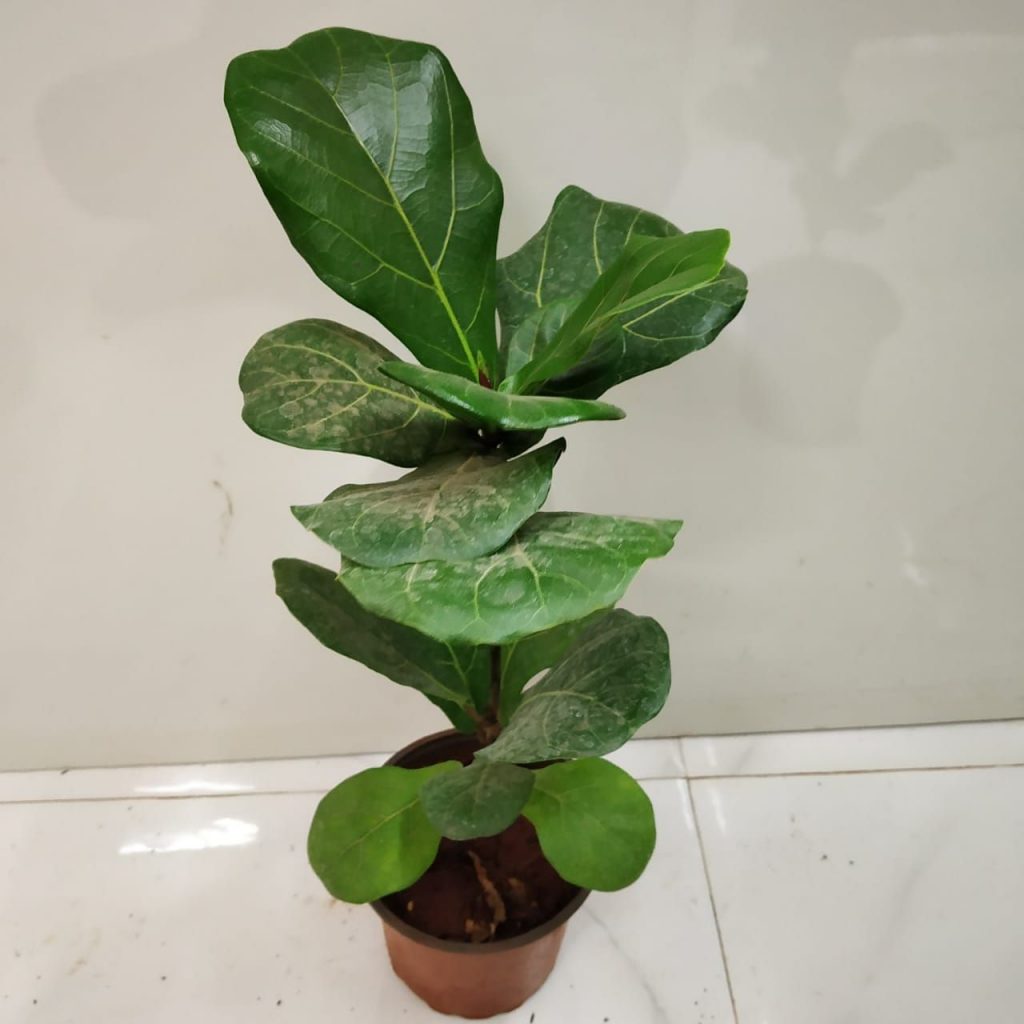
The super-trending Plant of the Year in 2018 the Ficus Lyrata, most popularly called the Fiddle leaf fig, is still a trend a year later; and really what’s not to love about it! It’s bushy clump-forming growth habit is voluminous and striking, and an easy, effortless feature plant. It has large paddle-shaped leaves which are a glossy bright green colour, spirally from a central slender stalk.
Watering:
The Fiddle leaf fig must be potted in well draining soil and does not like to sit in water. Water once a week, watering until the water drains out of the holes of the bottom of its pot. Drain all excess water out of the drip tray, if you see that water accumulates and stands. Mist the leaves in very warm weather. Over-watering causes splodgy brown mottled patterns in the leaves. Under-watering causes the leaves to brown on the edges and curl, as if they have been scorched – keep an eye out for these indicators of over or under watering.
Light:
Indirect sun, as well as some morning direct sunlight, is the optimal mix for your Fiddle Leaf Fig plant.
Positioning:
As this indoor plant can become a large tree up to 3m in height, it should be placed in a sturdy pot on the ground. It makes an excellent feature in any lounge or bedroom and a statement piece in your entrance hall or office. Not to mention its fabulous form and trendy popularity making it perfect for instagram worthy photo shoots!
8) Swiss Cheese Plant / Delicious Monster
The Monstera Deliciosa with the Perforated leaves; the Swiss cheese plant or commonly the Delicious Monster, is a plant lovers favourite, with its sculptural leaves and glossy green colour. The leaves can grow to 30cm in length, with the plant itself able to grow 3m in height.
Did you know: the holes and slits that develop in older leaves are an adaptation of the plant to heavy rainfall in it’s tropical origins. It is said that these slits limit leaf damage when torrential downpours occur.
Watering:
This plant is a heavy feeder and require sufficient fertilising to grow to it’s fullest, lush best. Wait until the top few centimetres of the soil is dry until watering, and then water well until it drains. Empty the drip tray. Water once a week in hotter months and reduce watering in cooler months.
Light:
The Delicious Monster will crave low light and does not need an excess of direct sunlight. It originates from a forest floor, with filtered, low light. It will do well in indirect sunlight, but it does not need a lot of light to thrive.
Positioning:
Delicious Monsters grow to a large size, and will soon overtake a small space. It’s jungle style, tender leaves will at some stage need support – stakes are handy for this. Bare this in mind when placing your plant- it will need sufficient space to grow, and is not really ideal for a windowsill (it’s no shrinking violet)!
9) Rubber Plant
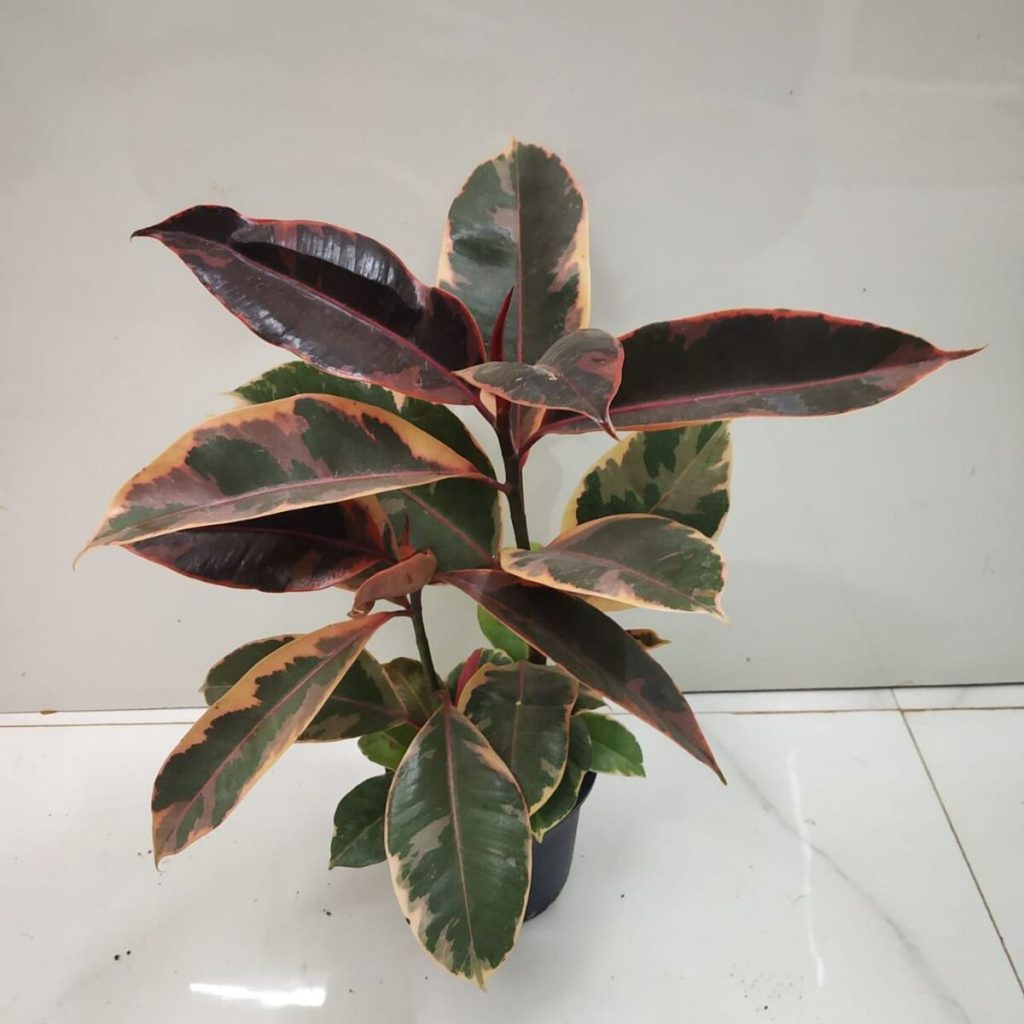
The Ficus Elastica, commonly know as the Rubber plant comes in the most beautiful dark green, creamy white and pink colours, etched with burgundy wine accents. The Ficus Belize has peachy-pink shades, the Ficus Elastica Tineke is marbled with white, pink and cream notes, and the the Ficus Elastica Abidjan is reminiscent of an aged Burgundy wine- it’s leaves a heady dark green and red mix. The Robusta is closest to it’s native original, with broad green glossy leaves.
The Rubber plant can grow to 30m in its natural surroundings, but can be easily managed indoors.
Light:
Indirect sun is best- place near a sunny window but without the sun actually reaching the leaves.
Watering:
Yellowed leaves show you are watering too much- these plants need only moderate watering, just enough to keep soil moist.
Positioning:
Growing up to 2.5m in height indoors, the firm central stalk does not require staking, and is a perfect plant for shelves and open floor spaces, large tables and low coffee tables.
10) Snake Plant

Sansevieria, known as the Mother-in-laws tongue or the Snake Plant, is a striking upright plant that comes in a variety of variegations, leaf sizes and growth patterns. The spear-like leaves are sometimes, but not always, edged in yellow, with a mottled green centre. These are great for beginners as they can thrive with very little maintenance and care. Not to mention its myriad of benifits and exceptional ability to clean the air.
Watering:
Water lightly and infrequently, as excess water will rot the plant. Water as little as every 3 to 6 weeks, allowing soil to dry out.
Light:
Sansevieria varieties cope well in low light and can be placed in almost any light condition.
Positioning:
It’s ability to absorb carbon monoxide makes this an excellent indoor choice; with it being a popular option in the bedroom and bathroom, for its air filtering and cleaning abilities. It’s also commonly enjoyed in lounging areas and offices, in tall baskets or slick pot covers.
11) Spider Plant
The Spider plant, or Chlorophytum, is known commonly as a Hen and Chicken plant, for it’s ability to propogate little “chicklets” on thin vines. The thin, spear-like bi-coloured leaves form a voluminous mass which is easy to care for – a truly hassle free plant.
Watering:
Easily one of the indoor plants that needs the least hydration; Chlorophytum can be given water infrequently and it will remain happy. Water once a week in summer and less in winter, taking care not to get soil soggy.
Light:
New shoots are promoted by adequate indirect light. Direct sunlight will burn leaves. Moderate light is more than adequate to keep this indoor plant thriving.
Positioning:
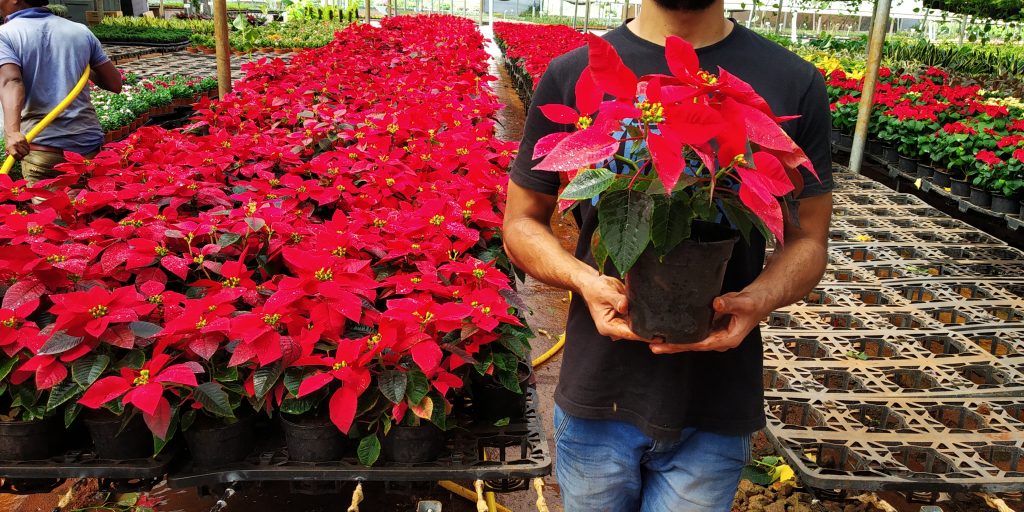
Take advantage of the trailing habit of this vibrant plant, and place on shelves or in hanging baskets and Macramé plant hangers. See how to make a Macramé hanger|. Great for hanging on shower rails or dropping over your cabinet.
12) Prayer Plant
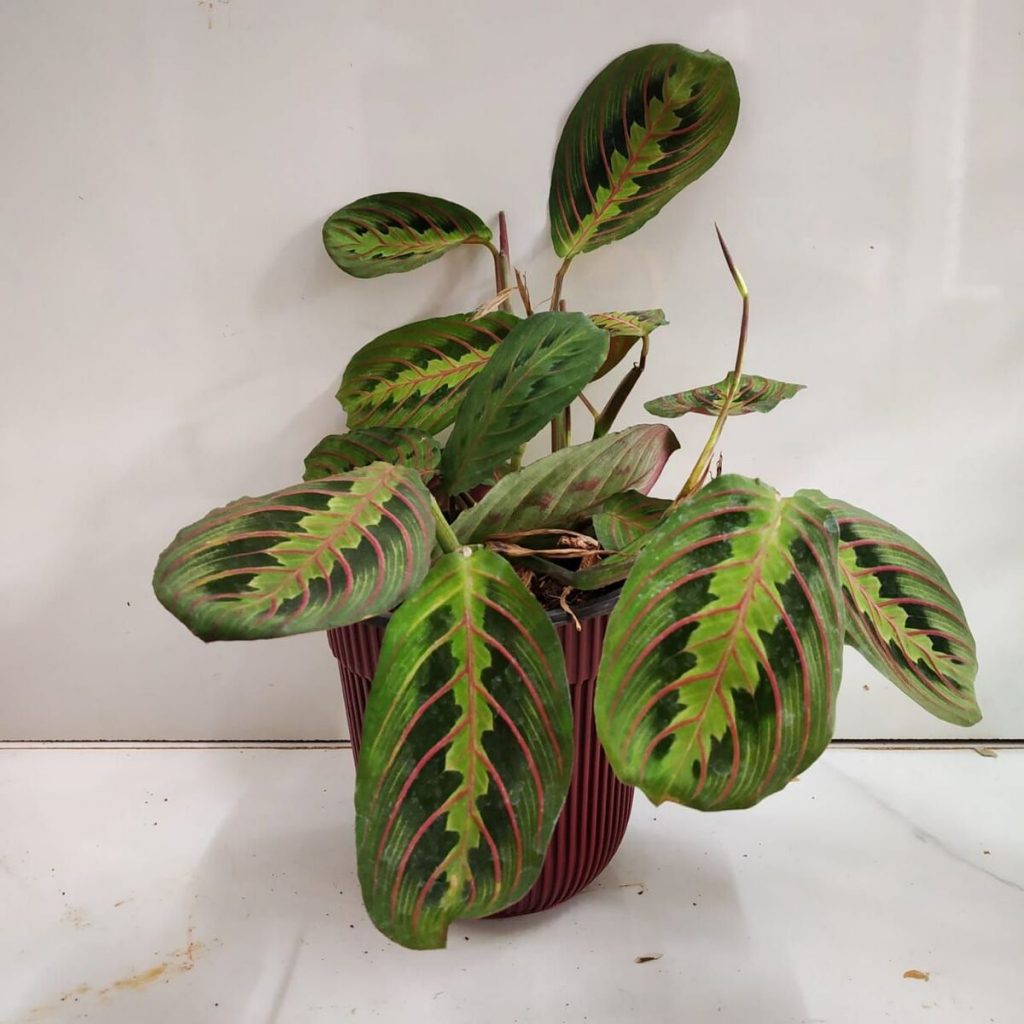
Calathea, known as Prayer Plants, are unique indoor plants known for their leaves which curl up into themselves at night. They are “sun chasers” and move according to the orientation of the sun. They often have striking colouring, with brightly coloured leaf undersides and interestingly formed leaf whorls. They belong to the family Marantaceae.
Watering:
The top few inches should be allowed to dry out before watering – this plant does not like wet feet. Empty drip trays when watering. Prayer plants benefit from fertilising on a two-weekly basis.
Light:
To avoid loss of colour in the leaves, place in indirect, not direct sunlight. They do not like dark areas, so place near a windowsill or in a bright room.
Positioning:
Great statement plants when they reach a good size; prayer plants are lovely as coffee table plants, kitchen plants and as decorative features atop a shelf in a well-lit room.
The Benefits of Indoor Plants
If living décor wasn’t enough to get you enthralled by the idea of indoor plants, these dynamic beauties are proven to have a plethora of health benefits and wellness enhancements that work to cultivate a greener lifestyle and healthy happy vibes indoors.


